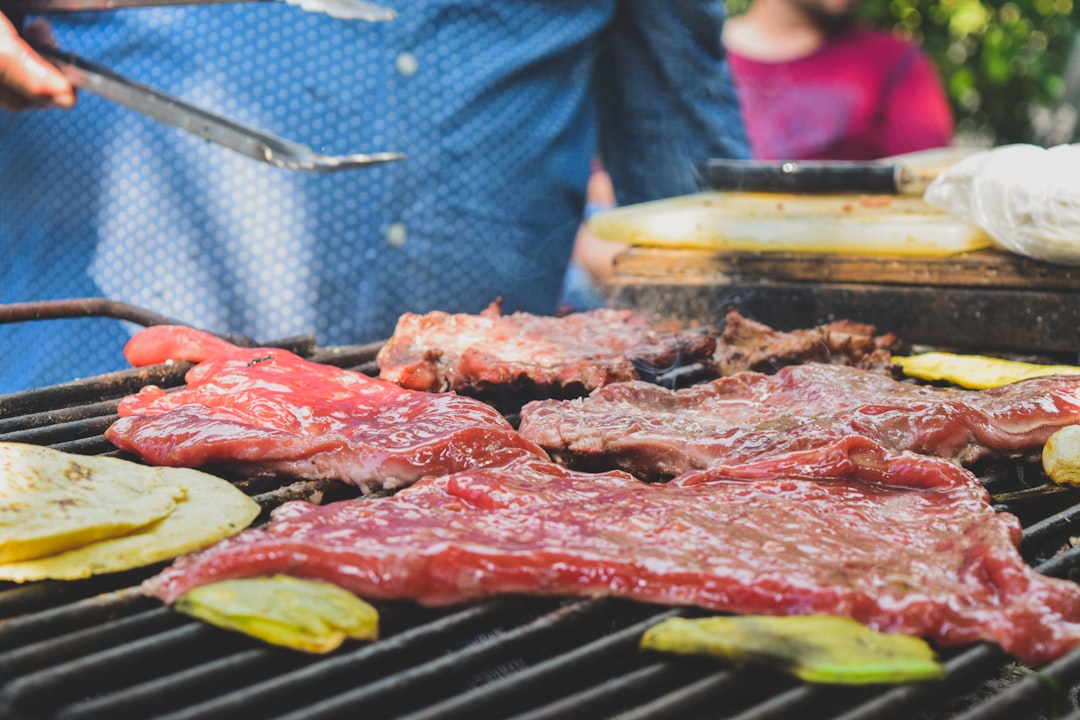Carne asada
The origin of Carne Asada can be traced back to the nomadic hunter-gatherers of Central America. It was their way of preparing an animal they had caught in a manner that gave them the most flavor with minimal effort. They would roast their meat on an open fire and season it with whatever spices they could find. This simple technique became the foundation for what we know today as Carne Asada.
Fast-forward to modern day Mexico, and Carne Asada is now enjoyed by people of all walks of life. The ingredients used to make the dish have evolved over time, but the essence remains the same.
Traditionally, Carne Asada utilizes a variety of cuts of beef that are marinated overnight in a mixture of citrus juices and select seasonings. This process helps tenderize the meat and give it a unique flavor. Once marinated, the beef is then grilled to juicy perfection and served alongside tortillas, onions, cilantro, and a side of salsa.
No two recipes of Carne Asada are exactly the same. Everyone has their own take on the dish, and whether its served with sides or eaten alone, it's always a delicious experience. Its ability to bring people together and create lasting memories is truly remarkable!
For someone who has never tried Carne Asada before, there is no better time than now. Give it a try and you won't regret it. Your taste buds will thank you for it!
Carne asada recipes
Amazing Carne asada recipes sourced from the web.
The origin of Carne asada
Carne asada, a beloved Latin American delicacy that for centuries has kickstarted family celebrations and delighted the tongues of savvy diners. The origins of this flavorful dish are steeped in history, and its story reveals how a culinary delight can be influenced by diverse cultural backgrounds.
The “asada” in carne asada is derived from the Spanish verb asar, meaning “to roast” or “to grill”. Going back to the 16th century, Spanish settlers to the New World brought with them the custom of grilling large cuts of cattle to be shared among their families. Over time, this tradition merged with the regional Mexican cooking styles, which also included roasting meats. In the process of combining these two methods of preparation, carne asada was born.
Carne asada is distinctive because of the particular cuts of meat used and the array of spices that give it its robust flavor. It is typically prepared using tougher cuts of beef such as skirt steak, flap meat, or hanger steak, that are marinated in a combination of lime juice, garlic, onions, and chilis before being roasted over an open flame.
The dish has become popular throughout Latin America, due to its ease of preparation and hearty ingredients. Additionally, carne asada has remained true to its roots and kept its traditional form, making it a favorite amongst locals.
From its signature cut of meat to its complex marinade and intense flavors, carne asada is an enchanting dish that has the power to transport eaters to a place that is full of culture, tradition, and deliciousness.
Types of Carne asada
Ah, Carne Asada. A dish with a history as rich as its flavor. From its humble beginnings in Central and South America to its status as a party staple across the United States, this slow cooked steak has become a favorite around the world.
Carne Asada is made by marinating a cut of beef, usually flank or skirt steak, in a combination of citrus fruits like lime or orange and an array of spices like cumin, oregano and garlic for a minimum of 4 hours and then grilling it to perfection over an open flame. It is often served with sides such as Mexican rice, refried beans, guacamole, and warm tortillas.
Though the marinade is generally consistent, there are several variations of Carne Asada depending on the region it's being prepared in or the particular flavor preferences of the cook. The taco truck version of Carne Asada is often served with grilled onions and jalapeños, while in coastal cities like Los Angeles and San Diego, one may find Carne Asada topped with pico de gallo and a drizzle of crema. In Northern Mexico, the steak is almost always served with chili powder and a squeeze of lime.
No matter what form it takes, Carne Asada manages to be a satisfying meal time after time. It's rich, savory flavor is enjoyable even to those who aren't usually fond of beef. Of course, it pairs well with the usual beer or margarita, but can also stand up to bolder wines like a Malbec or Cabernet Sauvignon.
Carne Asada is just as much about the experience of eating as it is about the flavor of the meat itself. When you're making Carne Asada, take the time to savor the experience: the scent of the marinade mingling with the smoke from the grill, the sound of the steak sizzling and popping, the sight of the cooked steak on the plate. Making and eating this traditional dish is sure to bring a lot of pleasure into your kitchen.



